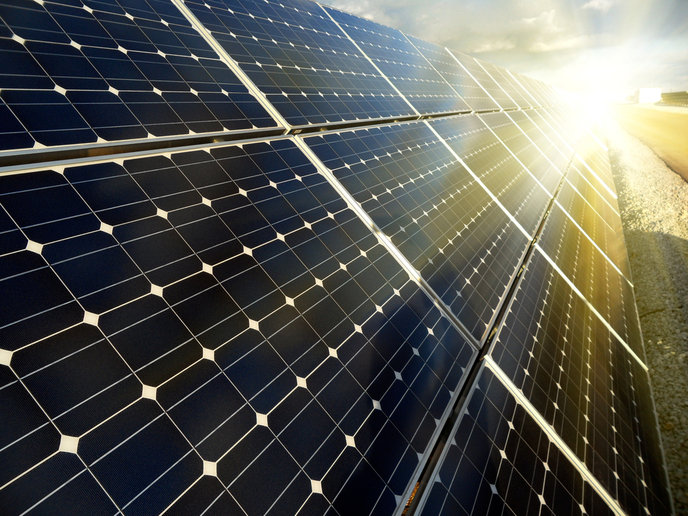The new ultra-thin solar cell: low-cost, non-toxic and more efficient
Researchers supported by the EU-funded HEINSOL, PREBIST and DISCOVER projects may have found a much better alternative to current solar power technology with a new type of ultra-thin solar cell. Made from nanocrystals containing silver and bismuth atoms, the solar cell could help to reduce our dependency on toxic elements, such as lead, or rare elements such as indium needed to make ultra-thin solar cells today. In their study published in the journal ‘Nature Photonics’, the researchers describe how an even spread of silver and bismuth atoms on the solar cell material led to greater light absorption than observed in other photovoltaic materials. This allowed more energy to be generated. What’s more, their environmentally friendly, 30-nm-thick solar cells achieved an impressive power conversion efficiency of 9.17 %, meaning that 9.17 % of the energy generated from sunlight was converted into electricity. The cells also maintained high stability under ambient conditions, suggesting lower degradation of the cell over long periods of time. “We are thrilled that our computational modelling helped increase the performance of these bismuth-based solar cells to such an extent,” remarks PhD researcher and study co-lead author Seán Kavanagh of DISCOVER project host University College London in a news item posted on the university’s website. Based on quantum mechanical models, the calculations sometimes had to be performed on more than 10 000 CPUs in a network running simultaneously for 24 hours.
Much thinner than silicon solar cells
The bismuth-based nanocrystals do not only consist of non-toxic elements abundant in nature, they are also cheap to produce. The solar cell material is reportedly 10 to 50 times thinner than current thin-film photovoltaics. Also, it is 1 000 times thinner than silicon photovoltaics that are bulky, costly and require a lot of energy to manufacture. “The results show how our research, looking at the underlying chemistry and physics of materials, can help in the design of high-performance, low-cost devices and support a green economy,” notes Kavanagh. “The devices reported in this study set a record among low-temperature and solution processed, environmentally friendly inorganic solar cells in terms of stability, form factor and performance,” states study senior author Prof. Gerasimos Konstantatos of HEINSOL project host and PREBIST project partner ICFO – Institut de Ciencies Fotoniques, Spain, in the same news item. “We are thrilled with the results and will continue to proceed in this line of study to exploit the intriguing properties [of the precisely engineered nanocrystals] in photovoltaics as well as other optoelectronic devices.” The substantial increase in solar cell efficiency achieved to date with support from the HEINSOL (Hierarchically Engineered Inorganic Nanomaterials from the atomic to supra-nanocrystalline level as a novel platform for SOLution Processed SOLar cells), PREBIST (COFUND BIST PREDOCTORAL PROGRAMME) and DISCOVER (Design of Mixed Anion Inorganic Semiconductors for Energy Conversion) projects suggests that additional improvements are possible. As Kavanagh notes, “the goal is to further improve efficiency so it is comparable with silicon-based solar cells.” For more information, please see: HEINSOL project PREBIST project website DISCOVER project
Keywords
HEINSOL, PREBIST, DISCOVER, solar cell, ultra-thin solar cell, energy, efficiency, bismuth, nanocrystal, atom, photovoltaic



